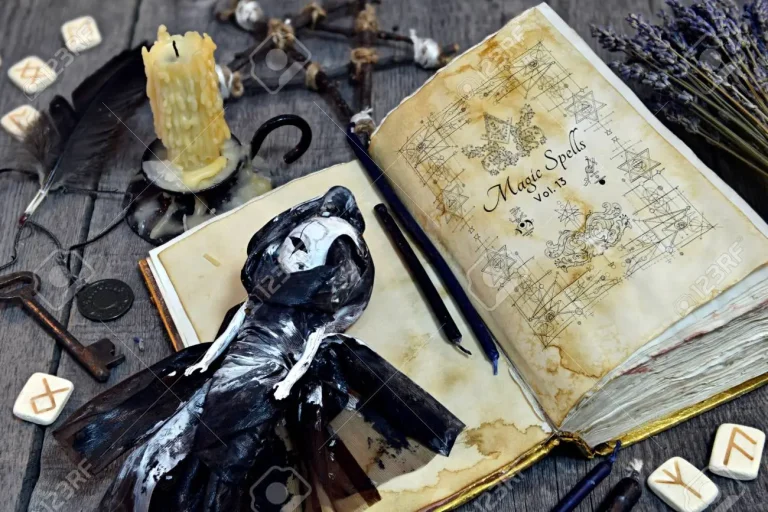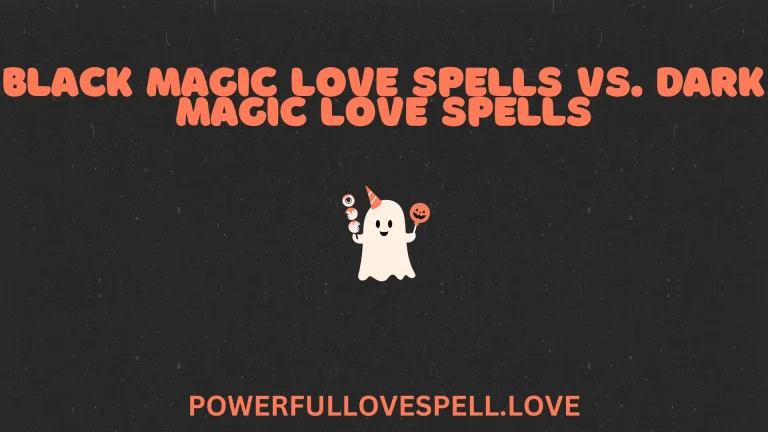History of Love Spells
The history of love spells is as varied as the cultures that practiced them. From the ancient rituals of Mesopotamia to the mystical incantations of the Greeks and the secretive spells of the Middle Ages, love magic has evolved over time, reflecting the values, beliefs, and desires of the societies that used them. Whether seen as a legitimate practice or dismissed as superstition, love spells have persisted, demonstrating the enduring human desire to influence love and relationships.
Origins of Love Spells
The earliest records of love spells date back to ancient civilizations, where they were often intertwined with religious and spiritual practices. In Mesopotamia, one of the cradles of civilization, cuneiform tablets from as early as 2200 BCE reveal rituals designed to invoke love and desire. These early spells often involved the use of incantations, offerings to deities, and symbolic objects to attract or bind a lover.
Similarly, in ancient Egypt, love spells were a common part of daily life, with numerous examples found in texts and on ostraca (pottery shards). These spells were often intended to arouse desire, ensure fidelity, or even compel someone to fall in love. The Egyptians believed such spells could influence the heart and soul, demonstrating a deep belief in the power of words and rituals.
Love Magic in the Greco-Roman World
In the Greco-Roman world, love magic became more sophisticated and widespread. The Greek Magical Papyri, a collection of texts from the 2nd century BCE to the 5th century CE, contains numerous spells to control love and desire. These spells often invoked gods and supernatural forces, asking them to intervene in matters of the heart.
One common type of spell in this period was the agōgē, designed to lead or compel the target to the practitioner. These spells could be highly elaborate, involving complex rituals, sacrifices, and the use of magical words, known as voces magicae, believed to hold intrinsic power. The Romans, inheriting much of this magical tradition from the Greeks, also practiced love magic, often integrating it with their religious and cultural beliefs.
Medieval and Renaissance Love Magic
The medieval period saw a significant shift in the practice and perception of love spells, particularly in Europe. With the rise of Christianity, many love spells were condemned as heretical or associated with witchcraft. However, their use remained the same. In fact, love magic became more clandestine, often blending Christian elements with older pagan practices.
During the Renaissance, love magic experienced a resurgence, particularly among the educated and elite. Alchemists, scholars, and magicians sought to combine scientific knowledge with mystical practices, creating complex love potions, charms, and spells. These were often aimed at overcoming social barriers, such as class or status, to achieve a desired romantic union.
Cultural Variations in Love Magic
While love spells are a common thread throughout history, their practice and purpose have varied widely across cultures. In many African and Indigenous traditions, love magic is deeply rooted in community and spirituality. For example, in African Vodou and Hoodoo practices, love spells often involve invoking ancestral spirits or using natural elements like herbs and roots to influence love and relationships.
In contrast, Asian cultures have their own rich traditions of love magic. In Japan, for instance, aishō-mamori, or love amulets, involves the creation of talismans believed to attract love or ensure fidelity. Similarly, in India, love spells and charms are often intertwined with astrology and the influence of planetary positions on romantic relationships.
Modern Interpretations and Practices
Now, love spells continue to be practiced worldwide, albeit in different forms and with varying degrees of seriousness. In modern Western cultures, love spells have been popularized by media, with portrayals in films, books, and television shows often romanticizing or trivializing their use.
However, love spells remain a serious practice in many communities, deeply embedded in cultural and spiritual beliefs. Modern practitioners of witchcraft, often identifying as Wiccans or Pagans, may use love spells as part of their rituals, emphasizing ethical considerations such as consent and the potential consequences of manipulating other person emotions.
Ethical Considerations and Misconceptions
The history of love spells is also a history of ethical dilemmas. While the idea of influencing someone’s emotions or actions through magic can be appealing, it raises significant moral questions. Many ancient and modern traditions warn against using love spells to manipulate or control others, emphasizing the importance of free will in love and relationships.
Moreover, popular misconceptions about love spells often portray them as quick fixes or guaranteed solutions to romantic problems. In reality, love spells, like any other form of magic, are believed to work within the natural laws of the universe, often requiring deep intention, alignment with spiritual principles, and an understanding of the potential consequences.
Love Magic
Love magic is a specific type of magical practice focused on matters of the heart—love, passion, desire, and attraction. Unlike other forms of magic that might aim to bring good fortune, health, or protection, love magic is intensely personal, often involving rituals and spells that are designed to affect another person’s emotions or actions.
Throughout history, love magic has taken many forms, from simple chants and charms to elaborate rituals involving the use of specific objects, symbols, and even sacrifices. The purpose of love magic can vary — some spells are intended to attract a new lover, others to ensure a partner’s fidelity, and some even to break up a relationship. Despite its diversity, all love magic shares a common goal: to influence the feelings and behaviors of others in matters of love.
Love Magic in Late Medieval English
In late medieval England, love magic took on a unique character, influenced by the social, religious, and cultural dynamics of the time. The medieval period was marked by a deep intertwining of religious beliefs and magical practices, with love magic often falling into a gray area between accepted religious rituals and condemned witchcraft.
During this period, love magic was often practiced in secret, as it was considered both socially and religiously transgressive. Women, in particular, were often associated with love magic, sometimes using it to secure the affection or fidelity of a husband, or to attract a desired lover.
This association with women, combined with the moral and religious scrutiny of the time, led to many accusations of witchcraft, with women being accused of using love magic to manipulate or harm others.
Medieval love magic in England often involved the use of everyday objects imbued with magical significance—herbs, stones, or personal items belonging to the target of the spell. These objects were used in rituals that might include chanting, the recitation of specific prayers or invocations, and the use of symbolic actions, such as tying knots or burning certain materials.
Love Spells in the Greek Magical Papyri
Love spells in the Greek Magical Papyri were often elaborate, involving complex rituals that called upon gods and supernatural forces to achieve the desired effect. One common type of spell was the agōgē, a spell intended to lead or draw the target of the spell to the practitioner. These spells often involved using magical words, known as voces magicae, believed to possess inherent power.
The rituals described in the Greek Magical Papyri often required the use of specific materials, such as herbs, animal parts, or personal belongings of the target. These materials were combined with chants and symbolic actions, such as inscribing magical symbols or burning offerings, to invoke the desired outcome.
Ancient Spells and Charms for the Hapless in Love
Throughout history, many people have turned to spells and charms as a last resort when faced with unrequited love or difficult romantic situations. These ancient practices were often seen as a way to tip the scales in favor of the practitioner, helping them to win the love or affection they so desperately desired.
Ancient spells and charms for love often involved simple yet symbolically powerful actions. For example, a common practice in various cultures was to write the name of the desired person on a piece of parchment or paper and then perform a ritual, such as burning the paper, burying it, or placing it under a pillow. The belief was that these actions would help to implant the practitioner’s desires into the heart or mind of the target.
Other ancient love charms involved the use of plants and herbs, which were believed to have specific properties that could influence love and attraction.
Love Spells in Pop Culture
Love spells have become a popular theme in books, movies, and television shows, often depicted as a mysterious and sometimes dangerous practice. Pop culture has both romanticized and sensationalized the idea of love spells, turning them into a common trope in fantasy and supernatural genres.
One of the most famous depictions of love spells in pop culture is in the Harry Potter series, where love potions and charms are used to comedic and sometimes sinister effect. In these stories, love spells are portrayed as both powerful and potentially harmful, reflecting the real-world ethical concerns associated with manipulating someone’s feelings.
Similarly, movies like “Practical Magic” and “The Craft” explore the idea of love spells within the context of modern witchcraft, showing both the allure and the dangers of using magic to influence love. These stories often emphasize the importance of free will and the consequences of trying to control others, highlighting the moral complexities that come with the use of love spells.
While love spells in pop culture are often exaggerated for dramatic effect, they continue to captivate audiences, reflecting the timeless fascination with love and the lengths to which people will go to achieve it. They also serve as a reminder of the enduring power of magic as a metaphor for the mysteries and challenges of love.
Conclusion
The enduring allure of love spells lies in their reflection of human desires and emotions. Throughout history, they have served as a means for people to seek control over one of life’s most unpredictable and powerful forces — love. Love spells continue to captivate and intrigue whether viewed as a spiritual practice, a form of psychological influence, or a cultural artifact.
As we look to the future, it is essential to approach the subject of love spells with respect for their cultural significance and an awareness of their ethical considerations. Whether practiced in ancient temples or modern homes, love spells remind us of the timeless human quest for connection, affection, and understanding in the complex world of love.






